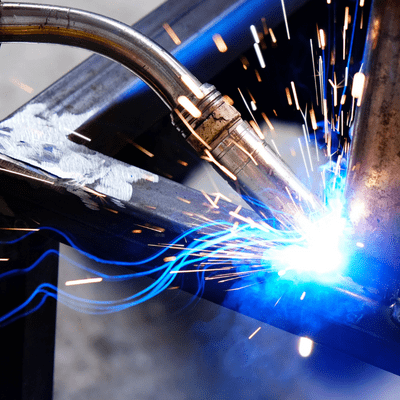It’s not a positive thought, but in entering the workplace, we’re walking into an environment that’s full of hazards. You can’t avoid them all, but you can stay safe by knowing what they are and how to deal with them.
Here, we look at the six types of hazards in the workplace, examples for each, and how to protect against all of them.

Biological
Biological hazards in the workplace include diseases like tuberculosis and food poisoning, as well as contact with animals that could carry rabies. Those working around sewage works, such as utility workers are more exposed to diseases such as E.Coli and Hepatitis A.
But biological hazards can be present in unexpected areas as well, such as groundworks and demolition sites. It’s not uncommon to find discarded needles in these types of environments, while rat urine can lead to a life-threatening condition called Leptospirosis if it comes into contact with an open cut, eyes, nose or mouth.

Chemical
Chemical hazards in the workplace include exposure to toxic substances such as asbestos or pesticides. Depending on the material or substance, without caution, chemicals can cause respiratory problems, skin irritations and burns, headaches and dizziness. Workers who are exposed to chemical hazards may also have an increased risk for certain cancers.
Beyond the now widely accepted dangers around asbestos, other professions that need to be careful include those working in a garage or on engineering projects, as they’ll be exposed to harmful fumes and solvents.

Physical
Physical hazards include noise, poor lighting and uncomfortable temperatures and humidity levels. These conditions can lead to hearing loss or eye strain as well as muscle pain or even repetitive stress injuries like carpal tunnel syndrome.
Security guards and other workers who are outside for a lot of the time must have the right PPE to help stave off the symptoms of cold stress, while construction and utility workers should have appropriate ear and eye protection when on a job.
But physical strains don’t need to be an inherent part of a role to cause health problems or injury. Maybe your home workers are holding off putting on their heating or lights as they keep a handle on their bills.

Safety
Safety hazards in the workplace relate to the lack of proper safety precautions. This might include slippery surfaces, lack of safety measures when working at a height, heavy lifting roles without proper equipment, or exposed electrical wiring.
Creating a hazard map of your working environment will help you identify these problems and put measures in place to counteract them. One simple solution might be to carpet an entrance area to reduce the risk of falls in wet weather. Another might be to make sure that anyone who does heavy lifting should be trained on how to do this properly before jumping right in without bending their knees.

Ergonomic
Ergonomic hazards in the workplace include repetitive tasks that cause musculoskeletal disorders (MSDs), stress from noise or light levels that interfere with concentration and alertness, or long periods of sitting without breaks for stretching or moving around.
A study from 2018 revealed that over 80% of people who work at a desk are there for between four to nine hours a day. Three years after many swapped office for living room, 38% of us are still working from home, potentially in a dubious kitchen table or sofa set-up.
On the plus side, it’s a lot easier to take a stretch in your own home to relieve tension and take a break from sitting down than it is in the middle of the office.

Pyschosocial
Psychosocial hazards in the workplace include any behaviour which causes stress in the workplace. This might be discrimination, harassment and violence. One in five people experience violence and harassment at work, so these risks are more common than you might believe.
Meanwhile, workloads and an intense pace lead to over half of workers feeling stressed in general at work. In such cases, a company culture overhaul might be needed to root out toxic behaviour or poor work life balance to avoid illness and high absenteeism.
Preparing for workplace hazards
A risk assessment that only looks at surface-level hazards might miss one or more of the above categories, so it’s important to look at each role through the lens of each. You should speak to your colleagues to gain a greater understanding of the risks they face at work, and if necessary, work on a dynamic risk assessment which can adapt to changing circumstances when working in a high-risk environment.
If you have people working alone, or away from others, a lone worker app or device can offer an added layer of protection and confidence in the face of workplace hazards. Our one-touch SOS button on the PG Smart App offers a way to instantly raise an alarm to either monitoring staff or emergency contacts. This can be paired with the PG Click Bluetooth trigger, so the user can raise an alarm discreetly without having to get out and unlock their phone.
In the event of a slip, trip or fall, our fall detection feature will raise an alarm and send an exact location for any responding emergency services.
Find out how our lone-worker solution offers a flexible and reliable option when it comes to ensuring the safety of your colleagues.
